Who doesn’t dream of stepping outside to find an oasis of comfort and style right in their own backyard? Whether you’re a beginner just dipping your toes into the world of outdoor design or a seasoned pro seeking fresh inspiration, “11 Outdoor Comfort Ideas for Your Next Project” is your go-to guide. This carefully curated list is packed with innovative ideas that promise not only to enhance the beauty of your outdoor space but also to elevate its functionality and comfort.
Imagine transforming your patio into a cozy retreat or turning your garden into a breathtaking escape where every moment spent is a joy. Each idea in this guide is designed to spark your creativity and provide practical solutions that make outdoor living a delight. By the end of your next project, you’ll feel confident and excited to invite family and friends into a space that truly reflects your personality and passion for outdoor living.
Incorporate Weather-Resistant Furniture Choices
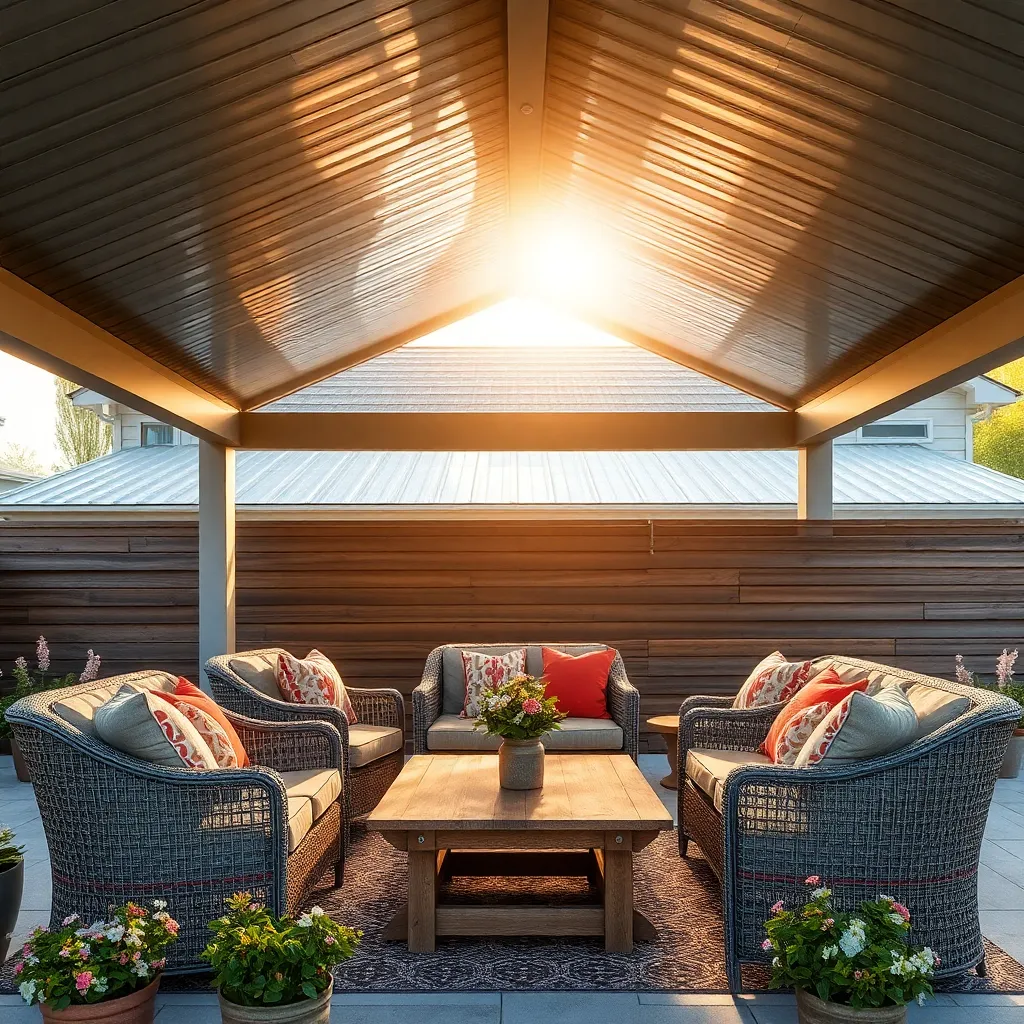
When selecting furniture for your outdoor shelter, prioritize weather-resistant materials such as teak, eucalyptus, or powder-coated metal to ensure durability against the elements. For beginners, consider starting with teak wood due to its natural oils that repel water and resist rot. Advanced gardeners might explore powder-coated aluminum, which offers a blend of lightweight design and rust resistance, perfect for regions with high humidity or frequent rain.
Incorporate design elements that enhance comfort while maintaining practicality, such as using cushions with fade-resistant fabric like Sunbrella to withstand UV exposure. Opt for furniture with removable cushions for easy maintenance and flexibility in style and color changes. To further extend the life of your furniture, consider adding a weatherproof cover or storing cushions indoors during extreme weather conditions, ensuring your outdoor space remains inviting year-round.
Select Multi-Season Shade Structures

Choosing the right multi-season shade structure can greatly enhance your outdoor space. For beginners, consider investing in a retractable awning, which offers the flexibility of sun or shade with a simple mechanism. These are often made from durable, weather-resistant materials like acrylic or polyester fabric, ensuring longevity. For those with more experience, a pergola with adjustable louvers can be a stylish option, allowing you to control the amount of sunlight and airflow, perfect for varying weather conditions.
When constructing or selecting a shade structure, focus on materials and design that cater to your specific climate. Powder-coated aluminum frames are lightweight yet sturdy, providing excellent resistance to rust and corrosion, making them ideal for humid regions. Ensure your structure is anchored securely, especially in areas prone to strong winds. For a touch of elegance, consider adding climbing plants such as wisteria or grapevines on a pergola, which not only provide additional shade but also enhance the aesthetic appeal of your garden space.
Add Cozy Weatherproof Textiles
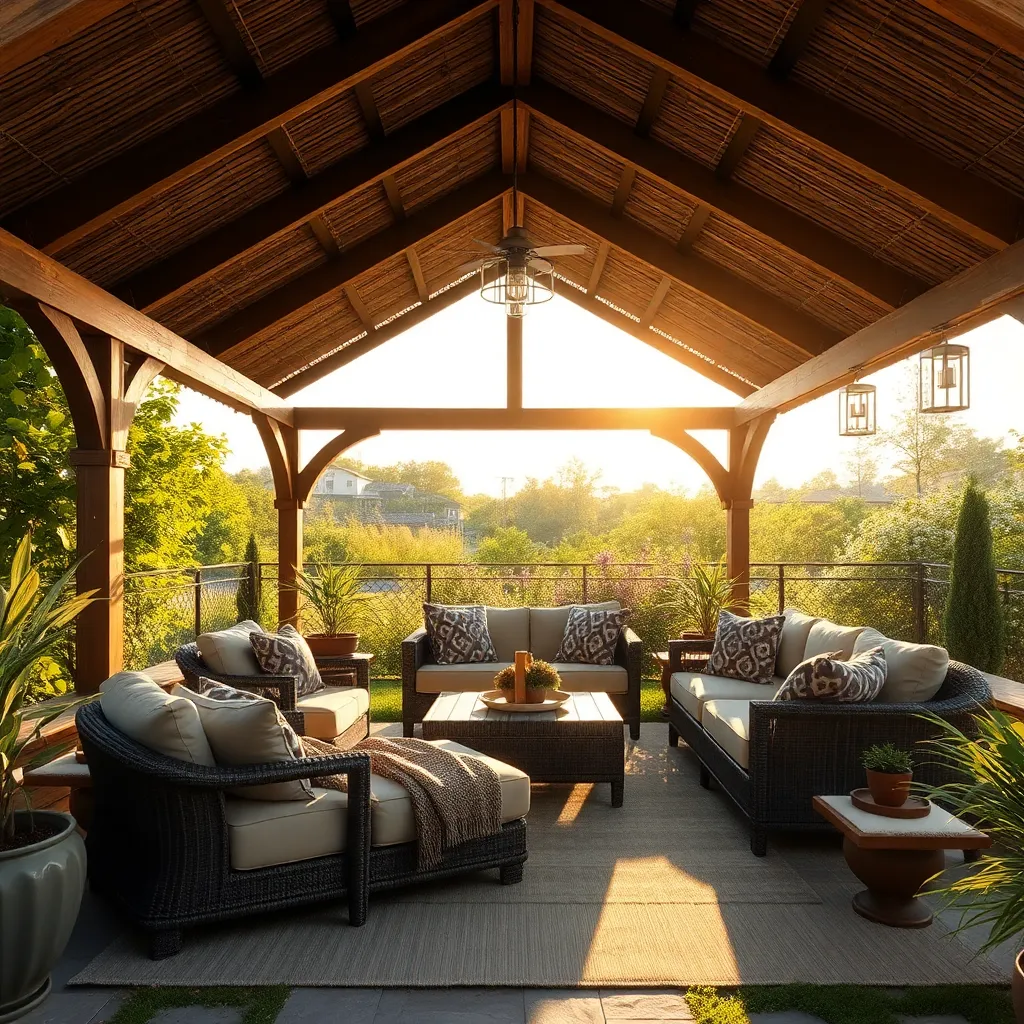
Incorporating weatherproof textiles into your outdoor shelter can dramatically enhance comfort and style. Opt for fabrics like solution-dyed acrylic, which resist fading and repel water, making them perfect for cushions and throw blankets. For a touch of luxury, consider adding a weather-resistant outdoor rug to define the space and add warmth underfoot. These textiles not only provide comfort but also protect against the elements, ensuring your outdoor area remains inviting throughout the seasons.
For those looking to elevate their design, mix and match patterns and textures to create a cozy, layered look. Choose textiles in a variety of colors and weaves that complement your existing decor, such as bold stripes or muted earth tones. Installation is straightforward: use velcro strips or ties to secure cushions, and store textiles in waterproof containers when not in use to prolong their lifespan. With these practical tips, you can transform any outdoor space into a stylish, weatherproof retreat.
Enhance Warmth With Portable Heaters
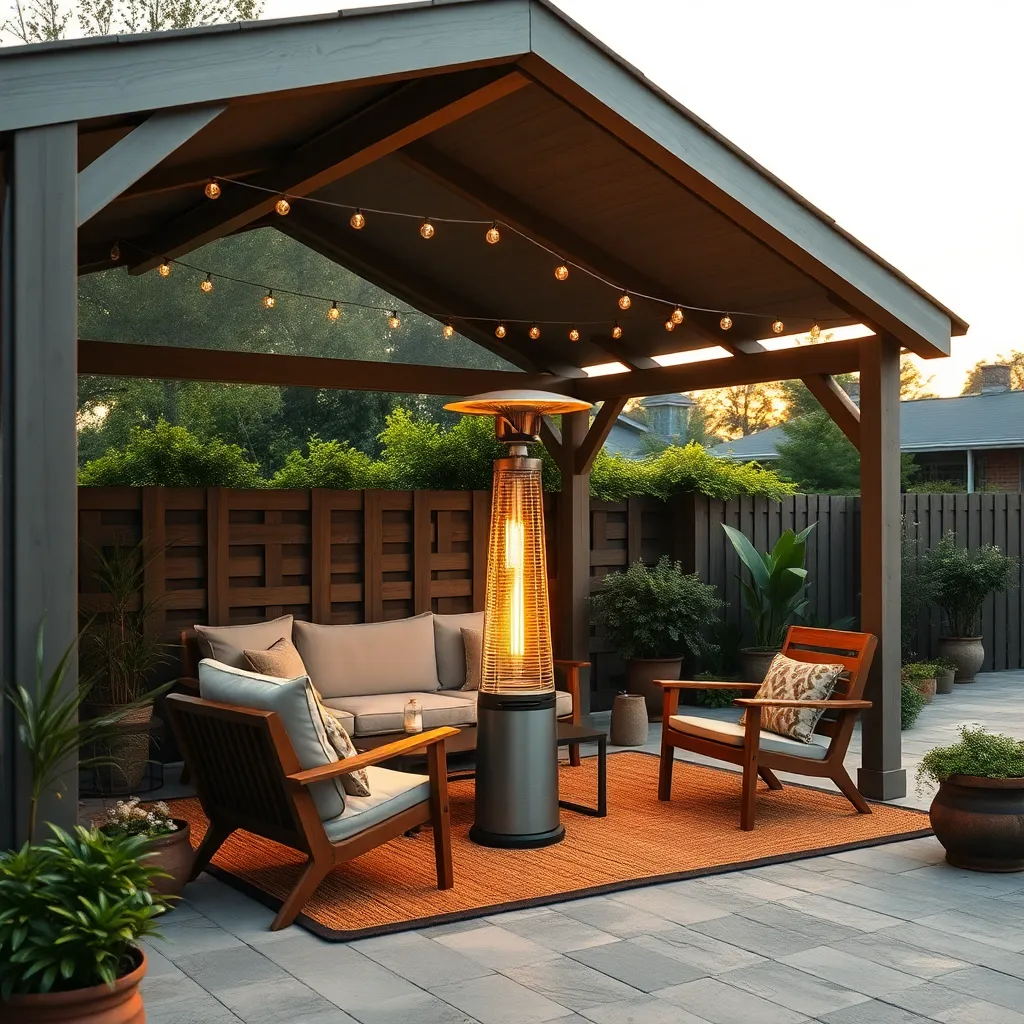
Adding portable heaters to your outdoor space is a surefire way to extend its usability through cooler months. Opt for propane, electric, or infrared heaters, which offer flexibility in terms of placement and energy efficiency. When selecting a heater, consider its heat output, which is measured in BTUs for propane heaters and watts for electric models. For a small patio, a heater with 5,000-10,000 BTUs or 1,500 watts is typically sufficient. Ensure your chosen model is weather-resistant and well-suited for outdoor use to guarantee safety and longevity.
Strategically placing heaters in your outdoor area can maximize warmth and comfort. Position them near seating areas or dining spaces, ensuring they are set at a safe distance from flammable materials. For an advanced touch, you might consider installing a ceiling-mounted or wall-mounted heater, which helps save floor space and provides even heat distribution. If you’re working with a pergola or gazebo, look for models with adjustable brackets for easy installation. Portable heaters not only provide warmth but also allow for a seamless transition from indoor to outdoor living, making your space inviting year-round.
Design With Natural Windbreaks
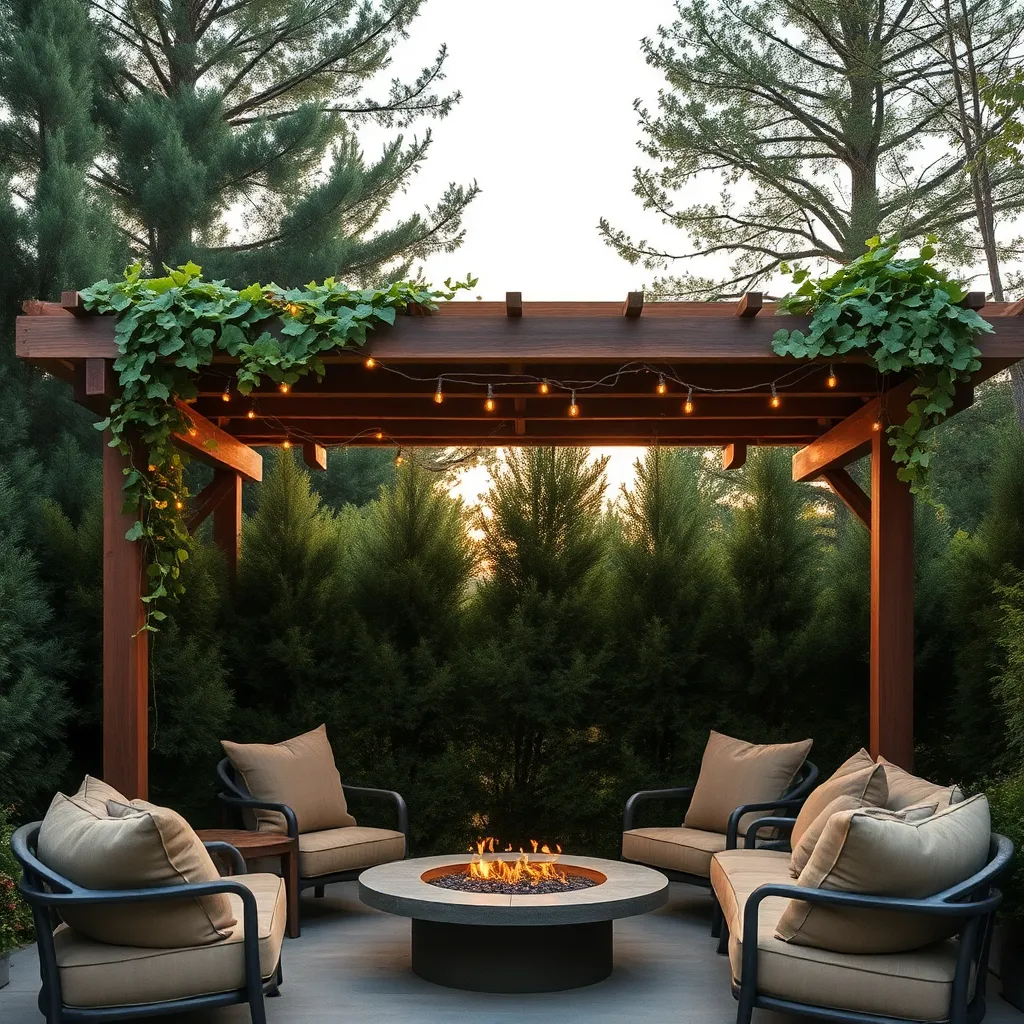
Integrating natural windbreaks into your outdoor design can significantly enhance comfort by reducing wind exposure. Start by planting a variety of dense shrubs and trees—such as evergreens or bamboo—along the perimeter of your outdoor space. These plants act as a living barrier, filtering wind and providing year-round protection. Position them strategically on the windward side, considering both the typical wind direction and seasonal variations.
For those looking to blend aesthetics with function, consider constructing a lattice wall or using trellises adorned with climbing plants like ivy or wisteria. This approach not only breaks the wind but also adds visual interest and natural beauty. When building these structures, ensure they stand at least 6 to 8 feet high to effectively reduce wind speed. Advanced gardeners might explore creating a layered windbreak, combining both living and non-living elements for optimal results.
Utilize Solar-Powered Lighting Options
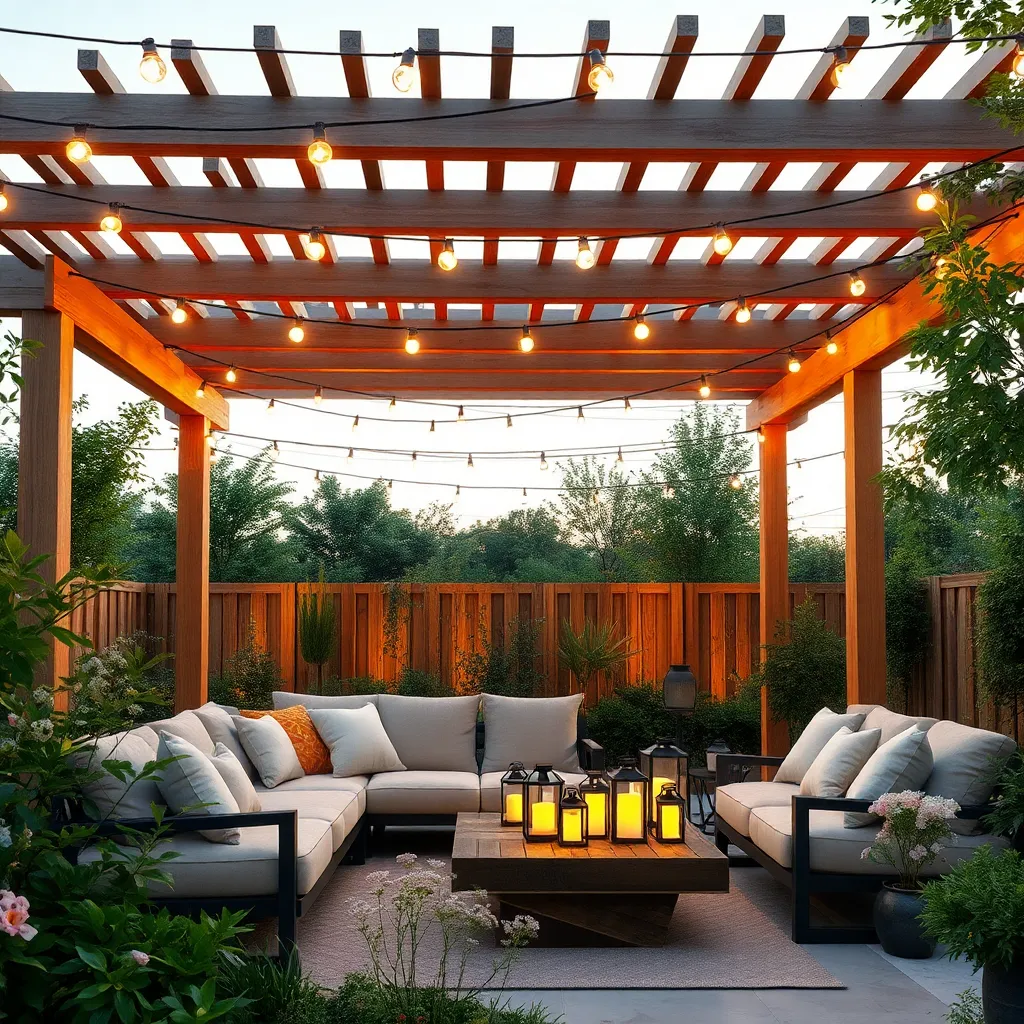
Solar-powered lighting is a fantastic way to enhance your outdoor shelter without relying on electrical wiring. Opt for lights with integrated solar panels that can be mounted on the roof or positioned around the perimeter of your shelter. This type of lighting is not only eco-friendly but also cost-effective, as it harnesses sunlight during the day to illuminate your space at night. Beginners can start with simple solar garden lights, while more advanced users might consider installing solar string lights or lanterns for a decorative touch.
For optimal performance, ensure your solar panels are positioned to receive maximum sunlight exposure, typically on a south-facing surface. Choose durable, weather-resistant materials such as stainless steel or high-grade plastic for your lighting fixtures to withstand the elements. For those looking to create a cohesive design, consider lights with adjustable color settings or dimming options to match your outdoor aesthetic. By incorporating solar-powered lighting, you’ll create a welcoming and energy-efficient atmosphere in your outdoor retreat.
Create Versatile Seating Arrangements
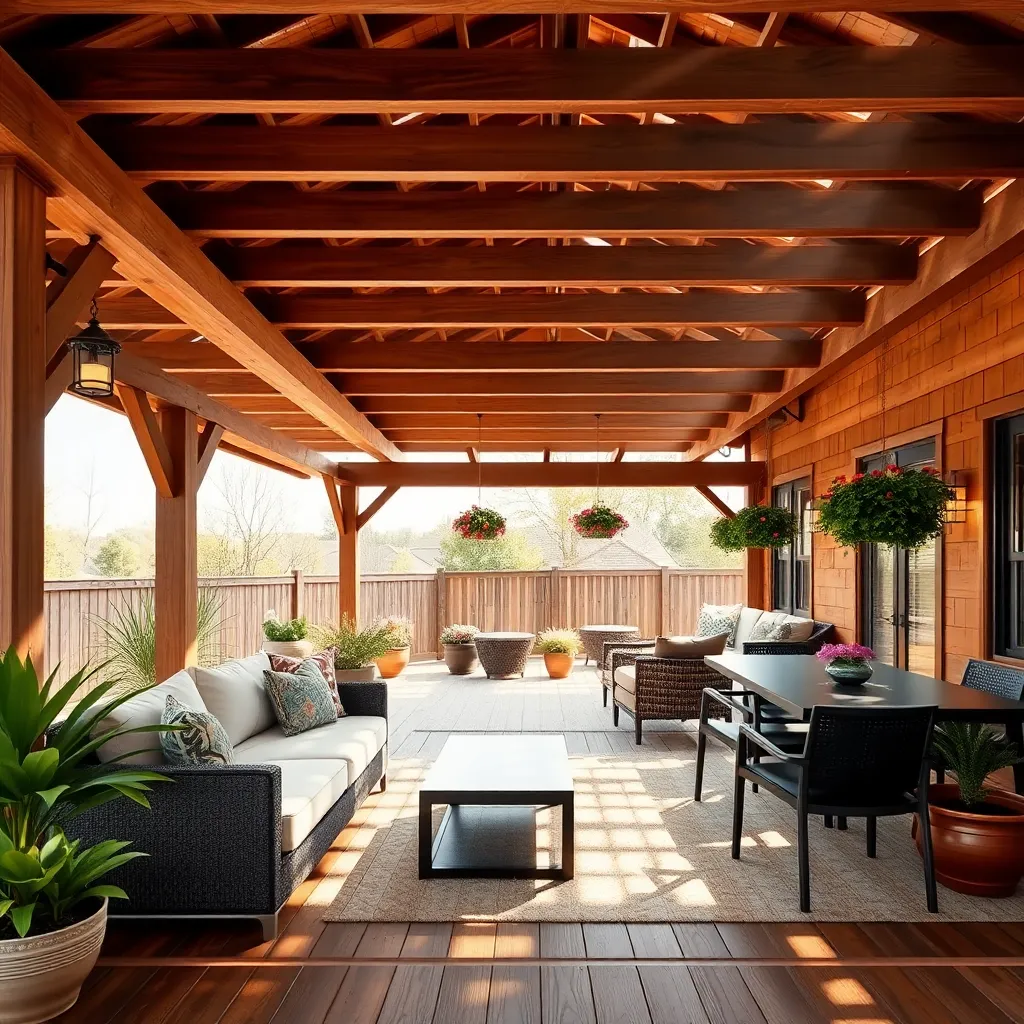
When designing versatile seating arrangements, consider incorporating a mix of fixed and movable elements. Start with a sturdy base by using materials like weather-resistant wood or metal for permanent benches. These can be built into existing structures or along the perimeter of your outdoor shelter. For a more flexible setup, add lightweight, stackable chairs or stools made from materials such as polypropylene or aluminum. This allows easy rearrangement based on the number of guests or the type of gathering.
To enhance comfort and style, invest in cushions and pillows made from outdoor-friendly fabrics such as acrylic or polyester, which resist fading and moisture. Opt for a neutral color palette for the main seating pieces, and use vibrant colors or patterns in your cushions for a pop of visual interest. For a more advanced touch, consider incorporating features like built-in storage under benches for stowing away cushions when not in use. This ensures your seating area remains tidy and ready for spontaneous use, encouraging you to make the most of your outdoor space at any time.
Include Easy-Access Storage Solutions
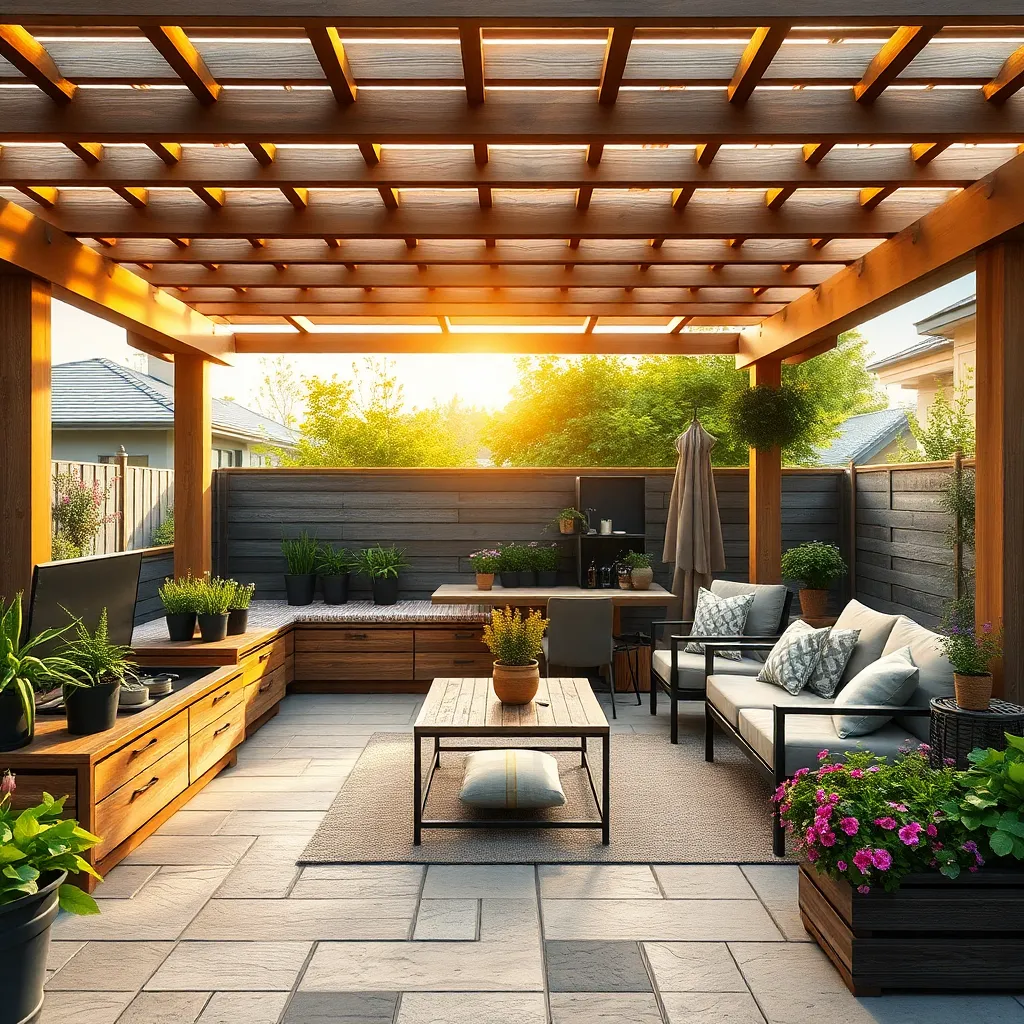
Integrating easy-access storage solutions into your outdoor shelter can greatly enhance both functionality and aesthetics. Consider using built-in benches with hidden compartments to store cushions, garden tools, or outdoor games neatly. Opt for materials like teak or cedar, which are durable and weather-resistant, ensuring longevity. If you’re a beginner, start with simple storage boxes or shelves, but for a more advanced project, explore custom cabinetry that can blend seamlessly with your outdoor design.
For those looking to maximize space, using vertical storage solutions is a smart approach. Install hooks or pegboards on the walls of your shelter to hang items like lanterns or gardening tools, keeping them off the ground and within easy reach. Advanced DIY enthusiasts might consider incorporating modular shelving systems that can be adjusted as your storage needs change. Whatever your skill level, ensure that all storage elements are waterproof and easily accessible, enhancing the overall functionality of your outdoor space.
Opt for Low-Maintenance Plant Selections
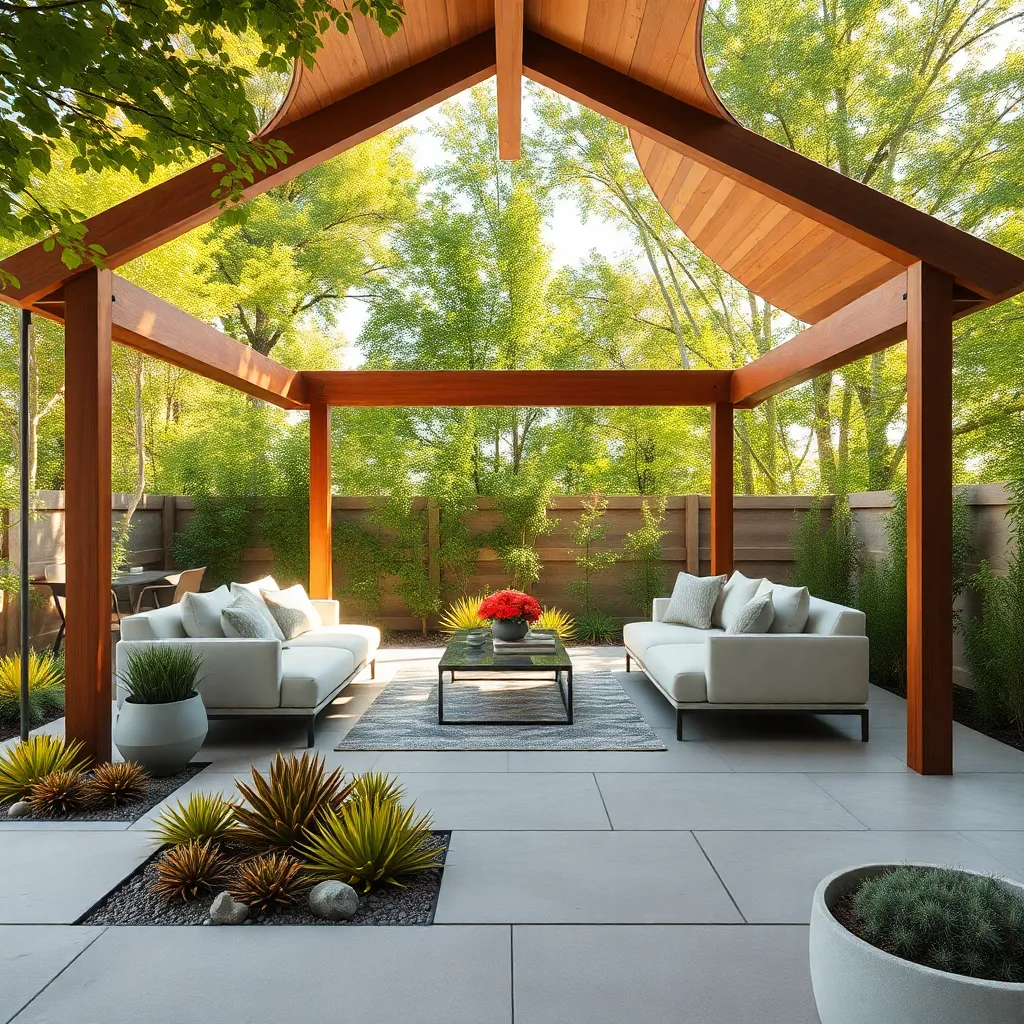
Choosing low-maintenance plants for your outdoor shelter can significantly reduce upkeep while providing lush greenery and color. Consider hardy perennials like lavender, ornamental grasses, or succulents, which thrive with minimal watering and care. These plants not only withstand various weather conditions but also add texture and visual interest to your space, making them perfect for both novice gardeners and seasoned experts looking to save time.
For a more refined look, incorporate container gardening using durable materials such as ceramic or high-quality plastic pots. These allow for easy rearrangement and create a clean, organized appearance. Beginners can start with a simple grouping of three to five pots, while advanced gardeners might experiment with vertical planters or tiered setups to maximize space. Always ensure containers have proper drainage to prevent waterlogging, promoting healthy plant growth.
Install Durable, Non-Slip Flooring
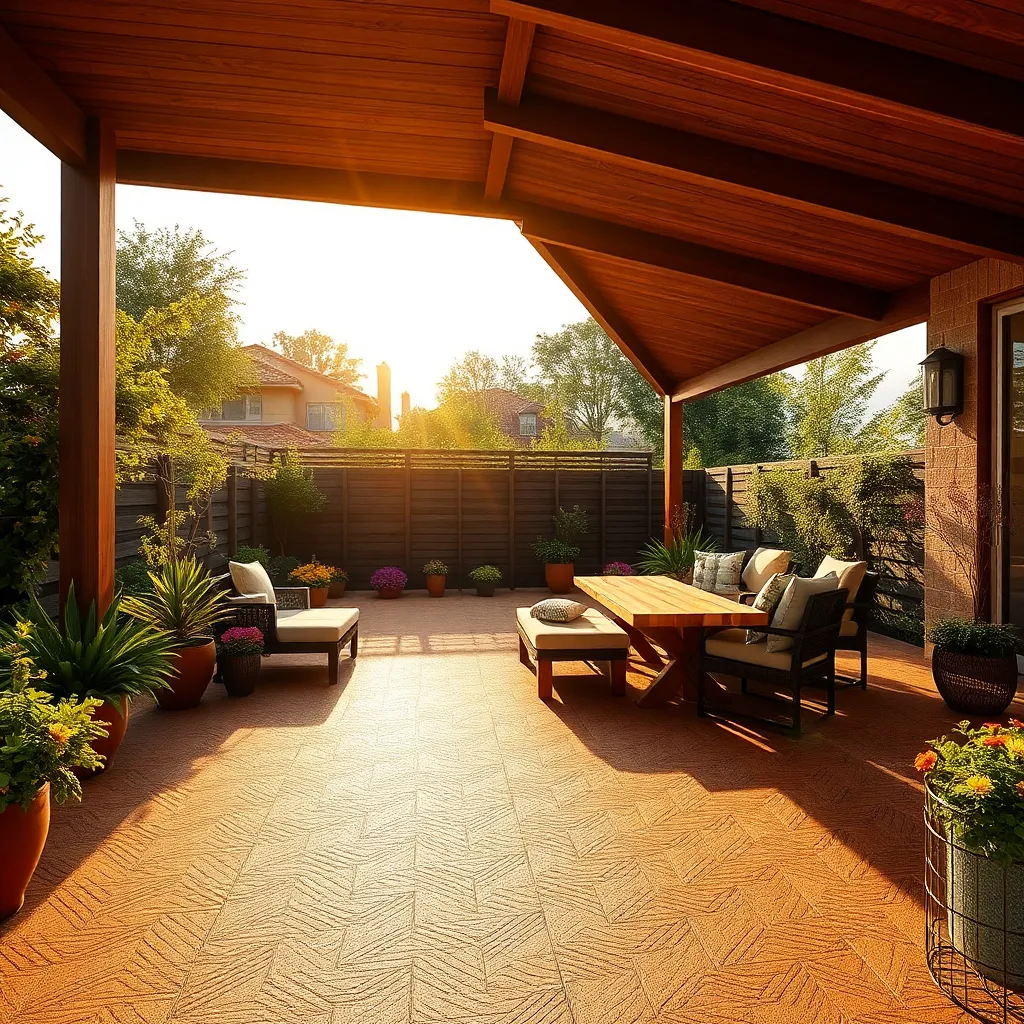
Enhancing your outdoor shelter with durable, non-slip flooring not only elevates the aesthetic but also ensures safety and longevity. Consider materials like textured stone, composite decking, or slip-resistant tiles that can withstand varying weather conditions. For beginners, composite decking offers an easy-to-install option with minimal maintenance, while advanced DIYers might explore poured concrete with a brushed finish for a custom, slip-resistant surface.
When choosing flooring, think about the size and use of your space to find the best fit. Opt for materials with a minimum thickness of 1 inch to ensure durability, particularly in high-traffic areas. Prioritize designs with built-in drainage to prevent water accumulation, which can lead to slips. For an added layer of safety and style, consider integrating rubber mats or outdoor rugs, which can be both functional and decorative. These simple yet effective strategies will make your outdoor shelter inviting and secure all year round.
Integrate Modular Shelter Systems
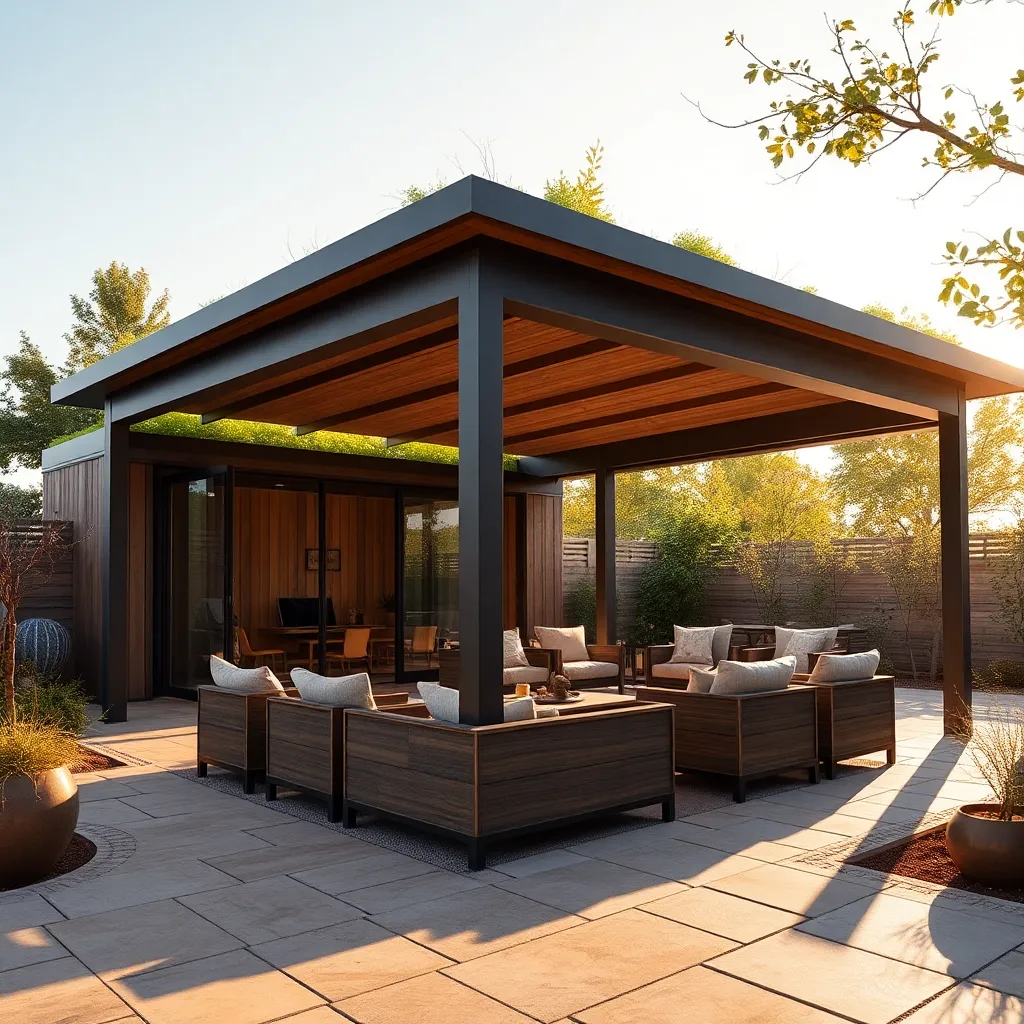
Integrating modular shelter systems into your outdoor space can significantly enhance comfort and functionality. Modular systems offer flexibility in design, allowing you to customize the shelter to fit your space perfectly. For beginners, start with pre-fabricated kits that include all necessary components, making installation straightforward. Consider using materials like aluminum or weather-treated wood that are both durable and easy to maintain, ensuring your shelter withstands the elements.
For those looking to add a personal touch, advanced projects might include custom features like retractable canopies or built-in lighting. When designing your modular shelter, think about the purpose: do you need shade, rain protection, or space for social gatherings? Incorporate elements like adjustable louvered roofs or side panels to adapt to varying weather conditions. Remember to measure your space accurately and consult with a professional if you’re adding electrical components or complex structural elements.
Conclusion: Creating Beautiful Outdoor Spaces
As we journey through the 11 outdoor comfort ideas, we discover the joy of shared experiences and the profound connection that nature can nurture in our relationships. From creating cozy seating areas that invite intimate conversations to incorporating ambient lighting that sets the mood for memorable evenings, these concepts prioritize togetherness and warmth. By integrating elements like natural pathways that symbolize your journey together or using versatile furniture for adaptability, each idea contributes to a nurturing environment where relationships can flourish.
Your next step is simple: choose one idea that resonates with you and implement it this week. Whether it’s setting up a small fire pit for evening chats or adding a hammock for peaceful relaxation, taking action today can transform your outdoor space into a haven of connection.
Bookmark this article to keep these ideas at your fingertips as you continue to cultivate love and connection in your life. Looking ahead, by investing in these comforting spaces, you’re not just enhancing your environment but laying the foundation for a thriving relationship. Embrace these changes, and watch how they enrich your bonds, making every moment together a cherished memory.
